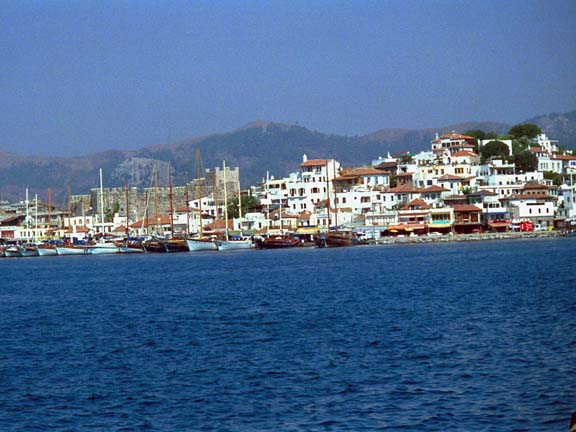Wednesday, February 14, 2007
LIMYRA/TURUNÇOVA
In Zengerler village and on the mountain hillsides to the northeast of the Finike plain the remains of the ancient city of Limyra can be seen. The name Limyra originally comes from “Luamira” meaning “Mother Light/Moon-Sun” in the Luwian/Etruscan language. Its history dates back to the Luwian era. It appears that there was a sacred worshipping centre here in the name of Mother Sun. The theatre with a seating capacity of 8 thousand people dated to the 2nd century A.D. has 28 caveas, the upper part being in ruins today. Today there is very little in front of the theatre, on the Agora where the remains of various Roman buildings are found. Beside Limyros creek are a basilica and priest palace belonging to the Byzantine era, and a Heroon built in memory of Gaius Caesar set upon a rocky podium. The Necropolis of the ancient city of Limyra can be observed in three sections. In the first section are the rock tombs, in the second section coffined sarcophagi and in the third section the monumental tombs into which sarcophagi bearing information on deceased persons of high rank are placed. Climbing up from the theatre towards the mountain the acropolis, at an elevation of 300 m, is reached. Today the area serves as the storehouse of citrus fruits. The port of FİNİKE, located to the west of Antalya, in a district on the south of the plain of the same name has, on a parallel with recent developments in tourism, also been expanded and transformed into a marina. With its newly built guest houses, in addition to its coast, which extends over several kilometers, and its ideal climate, it is eligible as a major centre of tourism. The Finike plain reaches 30 km to cape Caledonia, with a depth of 10 km from the sea to the Taurus mountains. Citrus fruit and greenhouse cultivation is carried out on the plain. Finike oranges enjoy a worldwide reputation. The settlement is located at the point where Mount Alacadağ descends steeply to the shore, onto the Finike plain, and the coast meets the mountain. The mountainous areas of the district contain pine forests, clusters of maquis and, in the marshy areas, eucalyptus and oleander trees. The district is obviously a settlement unit established by Turks and its name appears to be associated with the Phoenicians. The remains of some rock tombs encountered on the hillsides of the Mount Alacadağ provide testimony to this. It is thought that there was a port station belonging to the Lycians at the place where the district is located.
Subscribe to:
Post Comments (Atom)




No comments:
Post a Comment